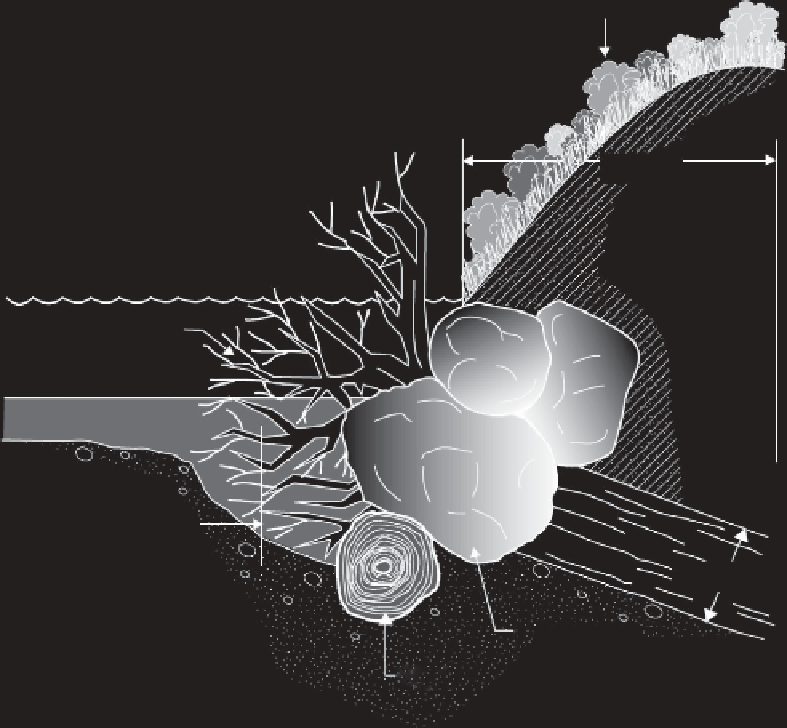Environmental Engineering Reference
In-Depth Information
Existing vegetation, plantings or
soil bioengineering systems
Cross section
Not to scale
8-12 ft.
length
Stream-forming flow
Rootwad
Base flow
Stream bed
�alweg channel
Diameter of log
=
16-in min.
Boulder 1 1/2 times
diameter of log
Footer log
FIGURE 8.46
Root wads. (From NRCS, Bank stabilization. Chapter 5 in
Engineering Field Handbook
,
Natural Resources Conservation Service. 1996b.)
while the low duration (i.e., time of concentration) decreases (Figure 8.47). Consequently, laws and
ordinances have focused on the prevention of looding by requiring the peak lows following con-
struction to be reduced to those prior to construction using some stormwater management system.
Traditionally, this system has consisted of structures (curbs, gutters, stormwater drains, etc.) to move
stormwater to some central location and off-site as quickly and effectively as possible. Then, central-
ized structures often route the stormwater to facilities (such as detention ponds) to temporarily store the
water and reduce the peak lows. While they have been effective in reducing peak lows, these struc-
tures alter the volume and timing of runoff, which often destabilizes the sediments in receiving waters,
and they have very limited capabilities in meeting evolving environmental and ecological requirements.
A recent and ongoing paradigm shift is away from the traditional stormwater methods of collec-
tion, routing, and storing, to maintaining functional relationships between terrestrial and aquatic eco-
systems by keeping water where it falls and using decentralized source control as well as focusing on
the quality as well as the quantity of the runoff. Examples include recent trends for low-impact devel-
opment (LID) and Leadership in Energy and Environmental Design (LEED)-certiied green build-
ings, increasingly encouraged or required in new or revised stormwater ordinances and regulations.
A wide variety of urban BMPs have been developed that are applicable to LID, some of which
are illustrated in Figure 8.48. A complete discussion of urban BMPs is beyond the context of this
text, but additional information can be obtained from the following selected sources:

Search WWH ::

Custom Search